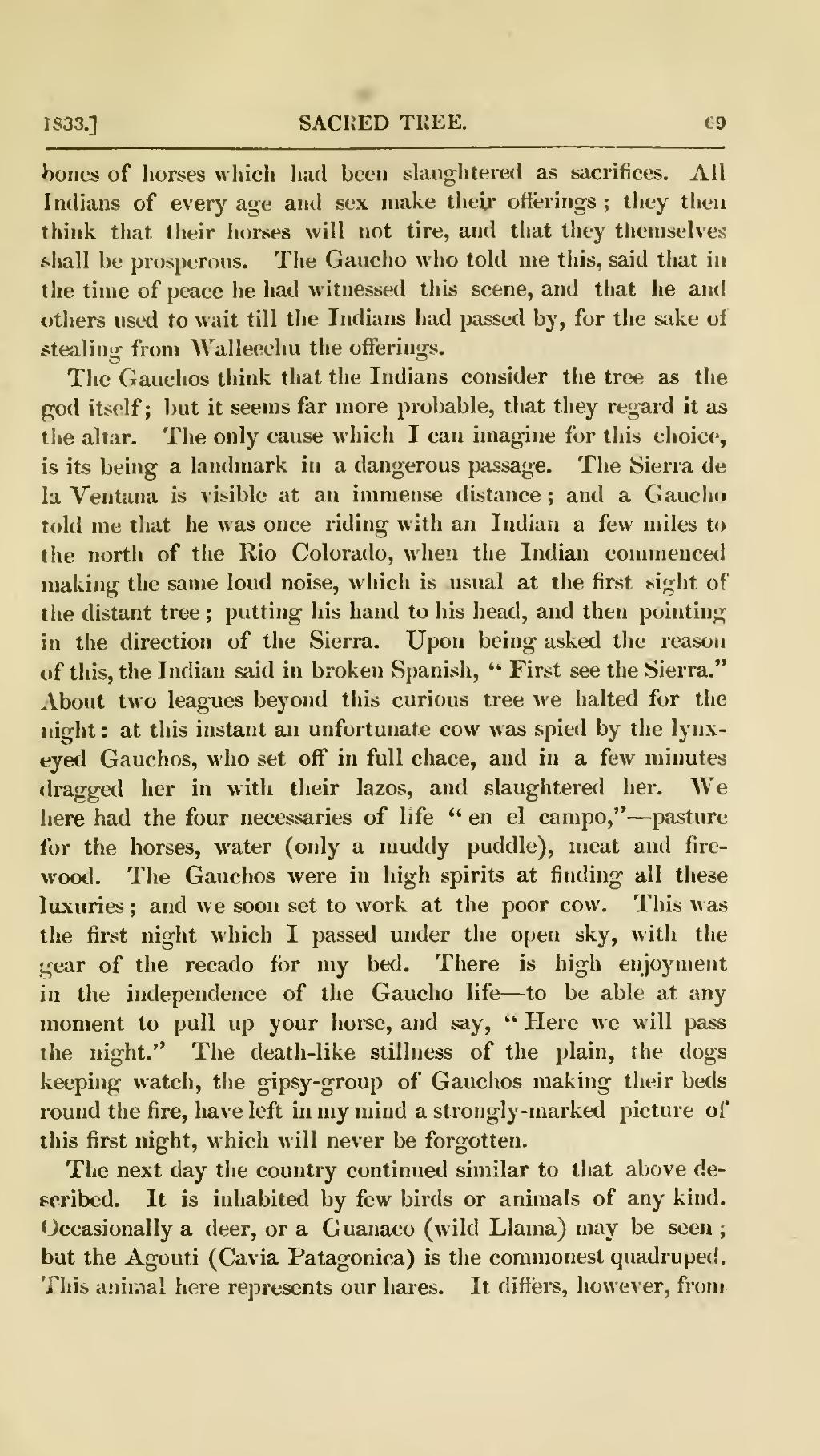bones of horses which had been slaughtered as sacrifices. All Indians of every age and sex make their offerings; they then think, that their horses will not tire, and that they themselves shall be prosperous. The Gaucho who told me this, said that in the time of peace he had witnessed this scene, and that he and others used to wait till the Indians had passed by, for the sake of stealing from Walleechu the offerings.
The Gauchos think that the Indians consider the tree as the god itself; but it seems far more probable, that they regard it as the altar. The only cause which I can imagine for this choice, is its being a landmark in a dangerous passage. The Sierra de la Ventana is visible at an immense distance; and a Gaucho told me that he was once riding with an Indian a few miles to the north of the Rio Colorado, when the Indian commenced making the same loud noise, which is usual at the first sight of the distant tree; putting his hand to his head, and then pointing in the direction of the Sierra. Upon being asked the reason of this, the Indian said in broken Spanish, “First see the Sierra.” About two leagues beyond this curious tree we halted for the night: at this instant an unfortunate cow was spied by the lynx-eyed Gauchos, who set off in full chace, and in a few minutes dragged her in with their lazos, and slaughtered her. We here had the four necessaries of life “en el campo,”—pasture for the horses, water (only a muddy puddle), meat and firewood. The Gauchos were in high spirits at finding all these luxuries; and we soon set to work at the poor cow. This was the first night which I passed under the open sky, with the gear of the recado for my bed. There is high enjoyment in the independence of the Gaucho life—to be able at any moment to pull up your horse, and say, “Here we will pass the night.” The death-like stillness of the plain, the dogs keeping watch, the gipsy-group of Gauchos making their beds round the fire, have left in my mind a strongly-marked picture of this first night, which will never be forgotten.
The next day the country continued similar to that above described. It is inhabited by few birds or animals of any kind. Occasionally a deer, or a Guanaco (wild Llama) may be seen; but the Agouti (Cavia Patagonica) is the commonest quadruped. This animal here represents our hares. It differs, however, from
